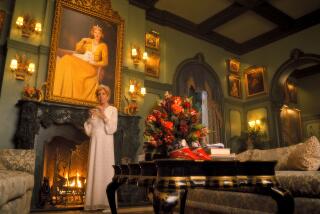CULTURE MONSTER
When a movie calls for artworks to be on camera, itâs usually a good idea to use copies: The rigors of shooting can be damaging to fragile masterpieces. But what happens if a director insists on using authentic creations?
âSummer Hours,â a film opening Friday, tells of a family-owned art collection that must be sold off after the elderly matriarch passes away. In a rare close collaboration between filmmaker and art institution, director Olivier Assayas and his crew partnered with the Musee dâOrsay in Paris and several private collectors to locate works including 19th century Barbizon School paintings and rare 20th century furniture.
âWe tried to obtain real objects whenever possible, because authenticity was very important to us,â said Francois-Renaud Labarthe, the movieâs production designer. He added in some cases, creating high-quality copies would have proved costlier than borrowing the real objects, an important consideration given the lean $7.6-million budget.
One of the central items in the movie is a 1902-03 mahogany desk by Louis Majorelle, a French designer who worked in the Art Nouveau style. The Musee dâOrsay (which originally commissioned the film, only to pull out later) loaned the desk for several crucial scenes and even sent curators to the set who dictated what could and could not be placed on it. The museum also loaned a glass case created by Majorelle and provided for transportation and insurance costs.
The crew borrowed from private collectors too. Assayas chose a pseudo-Art Deco cabinet by Austrian architect-designer Josef Hoffman that clashes with the other works, to show the familyâs eclectic tastes.
But the crew had to create copies of a few privately held pieces unavailable for loan: a large-scale panel painting by Odilon Redon, a statue by Edgar Degas and two Bracquemont glass vases. âAll of the objects are like actors in the film,â said Charles Gillibert, a producer. âWe wanted to create a sense of character through them.â
The preference for authenticity even extended to some casting. Viewers should pay close attention to a scene in which museum officials and appraisers meet: Except for one actor, all are Musee dâOrsay curators.
-- David Ng
More to Read
The biggest entertainment stories
Get our big stories about Hollywood, film, television, music, arts, culture and more right in your inbox as soon as they publish.
You may occasionally receive promotional content from the Los Angeles Times.











